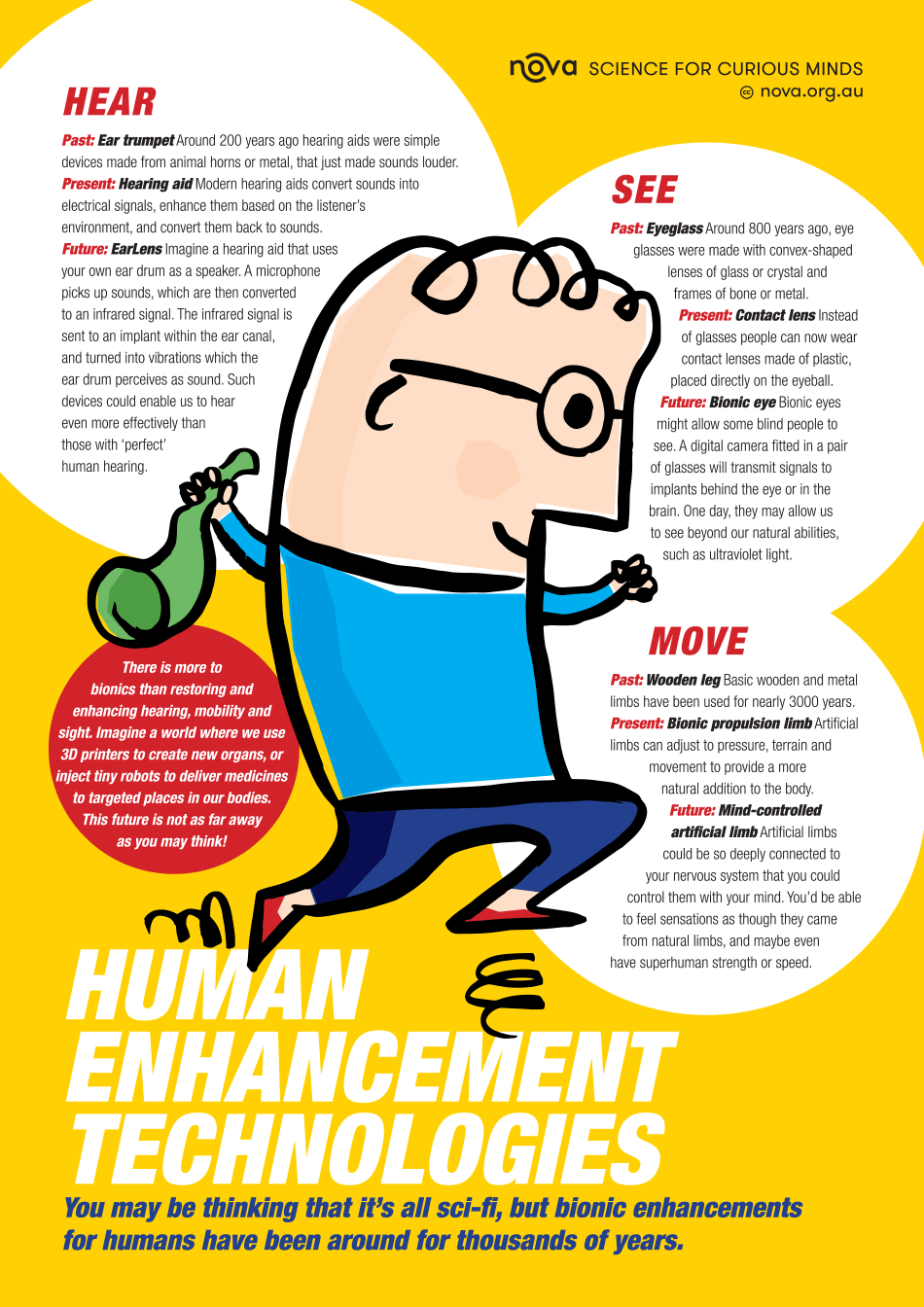- Home
- Infographics
- Human enhancement technologies
Human enhancement technologies
You may be thinking that it's all sci-fi, but bionic enhancements for humans have been around for thousands of years.
You may be thinking that it's all sci-fi, but bionic enhancements for humans have been around for thousands of years.
Hear
- Past: Ear trumpet. Around 200 years ago hearing aids were simple devices made from animal horns ormetal, that just made sounds louder.
- Present: Hearing aid. Modern hearing aids convert sounds into electrical signals, enhance them based on the listener's environment, and convert them back to sounds.
- Future: EarLens. Imagine a hearing aid that uses your own ear drum as a speaker. A microphone picks up sounds, which are then converted to an infrared signal. The infrared signal is sent to an implant within the ear canal, and turned into vibrations which the ear drum perceives as sound. Such devices could enable us to hear even more effectively than those with 'perfect' human hearing.
See
- Past: Eyeglass. Around 800 years ago, eye glasses were made with convex-shaped lenses of glass or crystal and frames of bone or metal.
- Present: Contact lens. Instead of glasses peopple can now wear contact lenses made of plastic, placed directly on the eyeball.
- Future: Bionic eye. Bionic eyes might allow some blind people to see. A digital camera fitted in a pair of glasses will transmit signals to implants behind the eye or in the brain. One day, they may allow us to see beyond our natural abilities, such as ultraviolet light.
Move
- Past: Wooden leg. Basic wooden and metal limbs have been used for nearly 3000 years.
- Present: Bionic propulsion limb. Artificial limbs can adjust to pressure, terrain and movement to provide a more natural addition to the body.
- Future: Mind-controlled artificial limb. Artificial limbs could be so deeply connected to your nervous system that you could control them with your mind. You'd be able to feel sensations as though they came from natural limbs, and maybe even have superhuman strength or speed.
More information
There is more to bionics than restoring and enhancing hearing, mobility and sight. Imagine a world where we use 3D printers to create new organs, or inject tiny robots to deliver medicines to targeted places in our bodies. This future is not as far away as you may think!






